When OpenAI and Meta rolled out new LLMs in early 2025, developers quickly hit a wall — not with model quality, but with performance. Traditional LLMs struggled to serve multiple users at once, causing delays and dropped requests. That’s when vLLM started gaining traction. Built for speed and scale, vLLM can handle dozens of concurrent sessions with minimal latency. It’s now powering chatbots, APIs, and enterprise tools that need real-time responses without bottlenecks.
Studies show that vLLM can reduce memory usage by up to 80% and increase inference speed by 4–5x compared to traditional LLMs, making it highly attractive for multi-user environments and large-scale AI deployments. With AI adoption skyrocketing, organizations are increasingly looking for models that balance performance, cost, and flexibility without compromising output quality.
In this blog, we’ll break down what makes vLLM different from standard LLM setups, how it works under the hood, and when to use it. Continue reading to explore real-world benchmarks, deployment tips, and how to choose the right engine for your AI workloads.
Key Takeaways
- vLLM optimizes LLM deployment for faster, more scalable, and memory-efficient performance.
- PagedAttention, dynamic batching, and multi-GPU support enable efficient long-context handling.
- vLLM delivers higher throughput and lower latency compared to traditional LLM inference.
- It is ideal for real-time, high-concurrency AI applications, such as chatbots and enterprise tools.
- vLLM outperforms standard LLMs in large-scale, multi-user, and resource-intensive scenarios.
What Is vLLM and How Is It Different from Traditional LLMs?
vLLM is an open-source inference and serving engine explicitly designed to optimize how large language models (LLMs) are deployed in real-world applications. Instead of being a new LLM itself, vLLM acts as an infrastructure layer that enables the faster, cheaper, and more scalable operation of LLMs. It integrates seamlessly with popular models from Hugging Face and other frameworks, making it highly accessible for both enterprises and researchers.
The main reason vLLM was developed is that traditional LLM inference is slow, memory-hungry, and inefficient. A popular real-world use case of vLLM is deploying high-performance LLM APIs for enterprise-scale applications. According to Markaicode’s vLLM Deployment Guide, companies are using vLLM to serve models like Llama 2, Mistral, and CodeLlama with:
- 10x faster inference speeds
- 50–75% lower GPU memory usage through quantization
- Support for 256+ concurrent sequences with low latency
- OpenAI-compatible APIs for easy integration into existing systems
These setups are being used in production environments for chatbots, customer support tools, developer assistants, and internal knowledge agents. vLLM’s dynamic batching and PagedAttention make it ideal for real-time, multi-user workloads.
Unlike standard inference systems, vLLM is built with memory handling and scalability in mind. Traditional setups often waste GPU memory due to static allocation, limiting throughput. vLLM, on the other hand, dynamically manages memory across requests, enabling dynamic batching and long-context handling. This allows enterprises to serve more users simultaneously, run longer prompts, and lower infrastructure costs — all while maintaining low latency.
Traditional LLM Inference vs vLLM: Feature Comparison
Here’s a quick breakdown to see how LLM vs vLLM stacks up against standard inference systems:
Feature Traditional LLM Inference vLLM Inference Purpose Runs the model as-is Optimized serving engine for LLMs Memory Handling Static allocation → wasted GPU memory PagedAttention dynamically allocates memory Throughput Limited batch processing High throughput with dynamic batching Latency Slower response times under load Lower latency even with multiple users Context Window Struggles with long inputs Efficient long-context handling Integration Manual optimization required Out-of-the-box Hugging Face + Ray Serve support Cost Efficiency High GPU usage, expensive scaling Optimized GPU use, significantly lower cost Best Use Cases Small-scale research, non-time-sensitive apps Large-scale chatbots, enterprise copilots, real-time assistants
Key Innovations in vLLM Architecture
The strength of vLLM lies in its architectural breakthroughs that tackle the biggest pain points of large language model (LLM) inference:
1. PagedAttention
- Inspired by virtual memory systems.
- Splits attention computation into smaller “pages,” preventing GPU memory fragmentation.
- Allows long-context prompts and larger workloads without exhausting memory.
2. Dynamic Batching
- Traditional inference wastes compute with static batching.
- vLLM uses continuous batching, letting new requests join ongoing batches.
- Maximizes GPU efficiency, throughput, and response consistency.
3. Seamless Integration
- Out-of-the-box support for Hugging Face models and frameworks, such as Ray Serve.
- Simplifies deployment, removing the need for custom engineering.
4. High Throughput + Low Latency
- Delivers up to 24x throughput improvements over conventional inference engines.
- Keeps response times in the millisecond range, which is essential for chatbots, copilots, and real-time applications.
5. Multi-GPU Support
- vLLM can efficiently scale across multiple GPUs, distributing workloads seamlessly.
- This makes it suitable for very large models and enterprise-scale applications that demand both speed and reliability.
- Ensures smooth scaling from single-node setups to distributed, production-ready clusters.
Performance Benchmarks: LLM vs vLLM
When it comes to inference performance, vLLM consistently outpaces traditional LLM inference engines. Benchmarks show that vLLM delivers:
- Throughput gains of up to 24x compared to conventional serving frameworks, thanks to its PagedAttention and continuous batching.
- Better memory efficiency, allowing it to run longer-context prompts on the same hardware without crashing or offloading excessively.
- Lower latency for real-time applications like chatbots and AI copilots, even under heavy workloads.
For example, in production-scale tests with models like GPT-3 and LLaMA, vLLM achieved significantly higher request-per-second (RPS) numbers while maintaining stable response times. In contrast, traditional LLM inference engines struggled with bottlenecks, especially when handling multiple concurrent users.
Benefits of Using vLLM Over Standard LLMs
Adopting vLLM provides organizations with both technical and business advantages:
- Scalability: Multi-GPU support allows businesses to run massive models or serve thousands of requests per second without degrading performance.
- Cost Efficiency: Higher throughput means you can serve more users with fewer resources, reducing cloud GPU costs.
- Flexibility: Seamless integration with Hugging Face and Ray Serve makes it easy to plug into existing ML pipelines.
- Reliability: Continuous batching ensures consistent response quality, avoiding dropped requests and idle GPU time.
- Future-Proofing: With innovations like PagedAttention, vLLM is designed for long-context and enterprise-grade workloads that standard LLM setups can’t handle effectively.
When Should You Use vLLM Instead of LLM?
Not every use case demands vLLM, but it shines in scenarios where scale, efficiency, and speed are critical. You should consider vLLM if:
- You’re building real-time AI applications such as conversational agents, copilots, or customer service bots where latency matters.
- Your models handle long-context inputs (thousands of tokens) for tasks like legal document review, research assistance, or summarization.
- You expect high concurrency, with many users querying the model at once, and need to maximize throughput.
- You want to reduce infrastructure costs by maximizing the value of your GPUs.
- You’re deploying in enterprise or distributed environments where multi-GPU scaling and reliability are essential.
For small-scale experimentation or lightweight research, traditional LLM inference might be enough. But when performance and efficiency become business-critical, vLLM offers a competitive edge.
Kanerika’s Role in Secure, Scalable LLMs Deployment
At Kanerika, we develop enterprise AI solutions across finance, retail, and manufacturing, enabling clients to detect fraud, automate processes, and predict failures more effectively. Our LLMs are fine-tuned for each client and deployed in secure environments, ensuring accurate outputs, fast responses, and scalable performance. With vLLM integration, we deliver higher throughput, lower latency, and optimized GPU usage. We also combine LLMs vs vLLMs with automation. Our agentic AI systems utilize intelligent triggers and business logic to automate repetitive tasks, make informed decisions, and adapt to changing inputs. This helps teams move faster, reduce errors, and focus on strategic work. Kanerika’s AI specialists guide clients through model selection, integration, and deployment — ensuring every solution is built for performance, control, and long-term impact.






